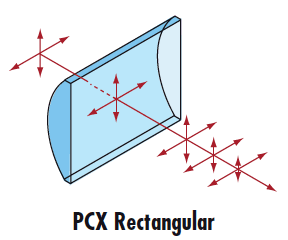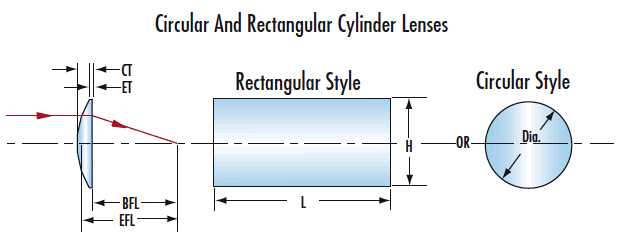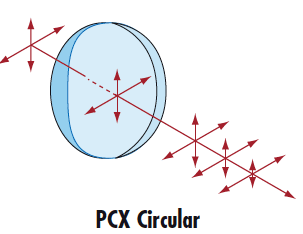
 TECHSPEC® components are designed, specified, or manufactured by Edmund Optics. Learn More
TECHSPEC® components are designed, specified, or manufactured by Edmund Optics. Learn More
| Volume Pricing | |
|---|---|
| Qty 1-5 | S$95.58 each |
| Qty 6-25 | S$85.88 each |
| Qty 26-49 | S$81.39 each |
| Need More? | Request Quote |
TECHSPEC® Illumination Grade PCX Cylinder Lenses are similar to Plano-Convex (PCX) lenses in profile, but include a portion of a cylinder instead of a sphere. These lenses focus light in one dimension and can transform a point of light into a line. TECHSPEC® Illumination Grade PCX Cylinder Lenses are available in circular and rectangular versions, along with multiple coating options. Cylinder lenses are ideal for line projection in machine vision applications or guidance systems.
Note: For negative focal length cylinder lenses, see our TECHSPEC® Illumination Grade PCV Cylinder Lenses.



Edmund Optics offers comprehensive custom manufacturing services for optical and imaging components tailored to your specific application requirements. Whether in the prototyping phase or preparing for full-scale production, we provide flexible solutions to meet your needs. Our experienced engineers are here to assist—from concept to completion.
Our capabilities include:
Learn more about our custom manufacturing capabilities or submit an inquiry here.
or view regional numbers
QUOTE TOOL
enter stock numbers to begin
Copyright 2024, Edmund Optics Singapore Pte. Ltd, 18 Woodlands Loop #04-00, Singapore 738100
California Consumer Privacy Acts (CCPA): Do Not Sell or Share My Personal Information
California Transparency in Supply Chains Act
The FUTURE Depends On Optics®